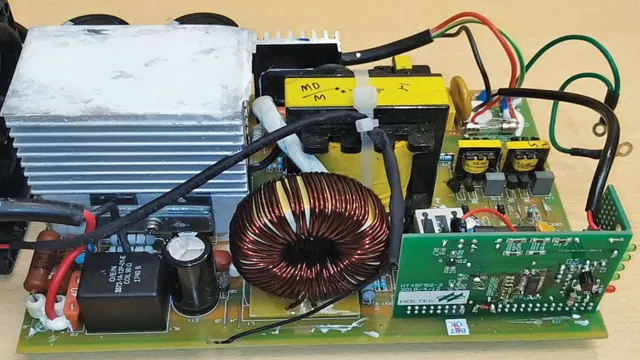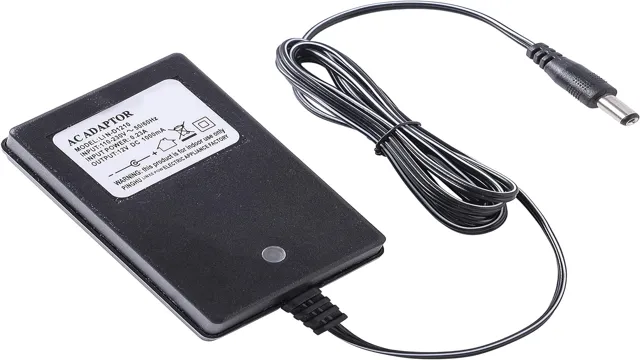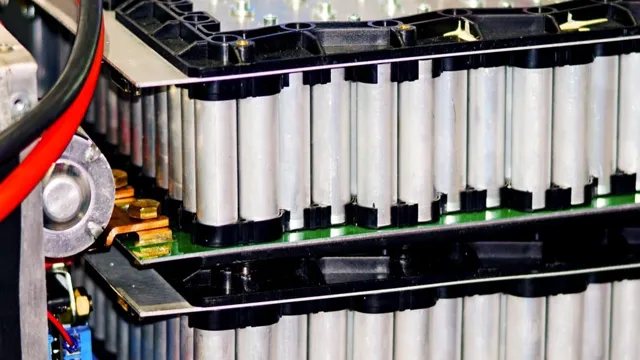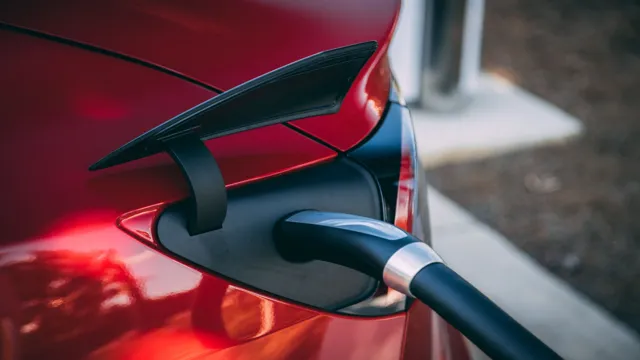Revolutionizing the Future of Transportation: The Ultimate Guide to Electric Car Battery Charger Design
Electric cars are a force to be reckoned with, and they’re quickly becoming more prevalent in the automotive industry. With their potential to revolutionize the way we drive, they also have the potential for a better, cleaner environment. But one of the main challenges faced by electric car owners is the need for battery charging.
Like any battery-powered device, electric cars need to be recharged after a certain period to keep them running. However, charging these cars requires more power and time than charging other devices. The good news is that today’s advancements in technology have given way to improvements in battery chargers.
With cutting-edge fast-charging technologies being developed, electric car owners can now get back on the road faster than ever before. Battery charging stations that take less time to charge the car are increasingly being installed in numerous locations, making electric cars more accessible and less of a hassle. Moreover, advancements in battery charging technology have also made them more efficient, allowing electric vehicle owners to travel further on a single charge.
This ranges from wireless charging systems to innovative battery technologies that can also increase energy storage in vehicles. In essence, electric car battery chargers are revolutionizing the way we drive and providing essential advancements for a more sustainable future. With these advancements, we can expect to see an increase in electric vehicle adoption in the near future, making our rides faster, efficient and easier than ever before.
Designing an Efficient Charger
Designing an electric car battery charger can seem like a daunting task, but with the right knowledge and resources, it is possible to create an efficient and effective charger. One important aspect to consider when designing a charger is its voltage and current requirements. It is important to match the charger’s output voltage and current to the car battery’s specifications.
Additionally, safety features such as overcurrent and overvoltage protection should be implemented to prevent damage to the battery or the charger itself. Another factor to consider is the charger’s efficiency, both in terms of power conversion and charging time. Utilizing technologies such as high-frequency switching power supplies and smart charging algorithms can help increase the charger’s efficiency.
Overall, designing an electric car battery charger requires attention to detail and careful consideration of factors such as voltage, current, safety, and efficiency, but the end result can be a valuable contribution to the growing electric vehicle industry.
Understanding Battery Charging Basics
Designing an efficient battery charger is crucial to ensure optimum performance of your device. While there are many factors to consider, one of the most important is input voltage. Input voltage determines how quickly a charger can charge the battery.
However, it is important to note that input voltage should not be higher than the rated voltage of the battery, or it could cause damage to the battery. Other important factors to consider when designing an efficient charger are the type of battery and its capacity, temperature range, charging algorithm, and charging current. By understanding and optimizing these factors, you can design a charger that provides fast and efficient charging without risking damage to the battery.
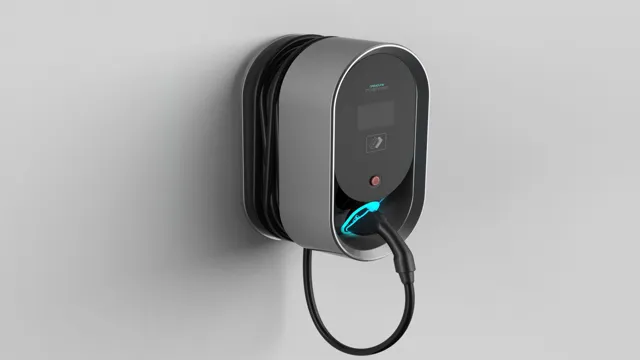
Factors to Consider for an Electric Car Charger Design
When it comes to designing an electric car charger, there are various factors to consider, but one of the most important ones is efficiency. An efficient charger not only charges the battery faster but also ensures that energy is not wasted. One way to increase efficiency is to reduce the amount of power losses during charging.
This can be done by selecting the right components, such as high-quality transformers and charging cables with low resistance. Another factor to consider is the charging algorithm, which can be optimized to maintain the battery’s health and extend its lifespan. Overall, an efficient charger can save time, energy, and money while helping to promote the widespread adoption of electric vehicles.
Types of Electric Car Chargers
If you’re considering switching to an electric car, it’s essential to understand the different types of electric car battery charger designs available. The most common type of charger is the Level 1 charger, which uses a standard wall outlet and can take up to 12 hours to fully charge a car’s battery. However, for faster charging, there are Level 2 chargers that require a dedicated 240-volt circuit and can charge a car in 4-6 hours.
Another option is the DC fast charger, which can charge a car up to 80% in as little as 30 minutes but requires specific charging stations that may not be readily available. When choosing a charger, it’s essential to consider the charging time, your daily driving habits, and the availability of charging stations in your area. Investing in a reliable and efficient electric car battery charger can make all the difference in your driving experience.
Level 1 Chargers: Pros and Cons
Electric car chargers are essential for those who own an electric car and require a charging station. There are different types of electric car chargers available, but the most popular ones are level 1 and level Level 1 chargers are the basic ones that come with every electric car.
They are portable and can be plugged into any regular electrical outlet, making charging convenient. These chargers typically take up to 12-14 hours to charge an electric car, depending on the car’s size and battery type. One of the significant advantages of level 1 chargers is that they are easy to use, and you do not need to install any additional electrical equipment.
However, there are some cons to level 1 chargers. For example, they are not suitable for long road trips and do not charge as quickly as level 2 chargers. Furthermore, they do not have the latest technology to monitor and manage the charging process, which might lead to overcharging or undercharging the battery, damaging it.
In conclusion, level 1 chargers are a great option for those who are satisfied with charging their electric cars at home and do not require high-speed charging or advanced charging management features.
Level 2 Chargers: Pros and Cons
Level 2 Chargers: Pros and Cons When it comes to electric car chargers, there are several options available, including level 1, level 2, and DC fast chargers. Level 2 chargers are the most common type of charger found in homes, businesses, and public charging stations. These chargers use a 240-volt power supply and can fully charge an electric vehicle in a matter of hours.
One of the main advantages of level 2 chargers is their versatility. They can be installed indoors or outdoors and are compatible with a wide range of electric vehicles. Level 2 charging also provides a faster and more efficient charging experience compared to level 1 chargers.
However, there are also some cons to consider when it comes to level 2 chargers. The installation cost can be quite expensive, depending on the location and electrical capacity of the building. Additionally, level 2 chargers may not be suitable for all EV owners, as they require a certain level of electrical infrastructure and may not be ideal for those who only require occasional charging.
Overall, level 2 chargers are a convenient and efficient option for electric vehicle owners who require regular charging and have the necessary electrical infrastructure. However, it is important to weigh the pros and cons before investing in a level 2 charger.
DC Fast Chargers: Pros and Cons
Electric car chargers come in different types. Among the most sought-after are DC fast chargers. Known for their ability to recharge a depleted electric vehicle battery quickly, these charging units use direct current to deliver a high voltage to the car’s battery.
They are available in power levels ranging from 50 kW to 350 kW, with the latter being capable of delivering an 80% charge in 20 to 30 minutes. Despite their speed, DC fast chargers have some downsides, including their cost and energy consumption. They are also incompatible with some EV models, so it’s essential to make sure your car is equipped to handle DC fast charging before using one.
However, when used within their limits, these chargers can keep you on the road for longer, making them ideal for long-distance travel.
Considerations for DIY Electric Car Charger Projects
If you’re considering building your own electric car battery charger, there are a few things to keep in mind. First and foremost, safety should be your top priority. You’ll be dealing with high voltages and currents, so it’s important to take the necessary precautions to prevent electrical shocks.
Additionally, you need to choose the right components and ensure they’re compatible with each other. This includes selecting the appropriate charging protocol, such as CCS or CHAdeMO, and making sure your charger can handle the maximum charging rate of your EV’s battery. You may also want to consider the physical design of your charger, such as whether you want it to be portable or permanent.
Overall, designing your own electric car battery charger can be a rewarding project, but it requires careful planning and attention to detail to ensure it’s safe and effective.
Safety Precautions for Building Your Own Electric Car Charger
When building your own electric car charger, there are some important safety precautions that you need to keep in mind. First and foremost, safety should always be your top priority. Before starting any DIY project, be sure to read the instructions thoroughly and understand all of the steps involved.
It’s also a good idea to wear protective gear, such as gloves and safety glasses, to prevent any accidents or injuries. When working with electricity, you also need to be aware of the risk of electric shock. Make sure to turn off all power sources before you begin your project, and use a voltage tester to ensure that there are no live wires.
Another important consideration is the type of materials and equipment that you use. Be sure to only use approved materials and equipment that are rated for your voltage requirements. By taking these safety precautions, you can ensure that your DIY electric car charger project is a success and that you and your vehicle are safe.
Tools and Materials Needed for a DIY Electric Car Charger
Are you thinking about building your own electric car charger? Before you dive in, it’s essential to consider the tools and materials that you’ll need to make your project a success. Firstly, you’ll need a charging station that matches your car’s charging specifications. You’ll also need a power source suitable to support your charging station.
Depending on the power requirements, this could be a dedicated circuit or something more substantial, like a high-power outlet. Safety should also be a vital factor in your decision-making process. Be sure to invest in high-quality wiring, breakers, fuses, and a disconnect switch to ensure that your charging station is both safe and efficient.
Welding expertise or the assistance of a professional electrician may also come in handy in the assembly process. With the right tools and materials and proper safety precautions, you’ll be able to create your own personal electric car charging station in no time.
Future Trends in Electric Car Charger Designs
The future of electric car battery charger design is evolving rapidly with the increasing demand for electric vehicles worldwide. One of the innovations in this field is wireless charging, where the car battery charges without the need for cables or plugging in. This technology involves the use of magnetic resonance that transfers energy wirelessly from a charging pad to the car’s battery.
Another trend is focused on making chargers more accessible, where charging stations will integrate with existing structures such as street lights and parking meters, making it easier to charge your vehicle while parked. Additionally, charging stations will become smarter, with the ability to communicate with the car and to adjust the power output to avoid grid strain during peak hours. With the continued advancements in technology, electric car battery charger design will continue to get more convenient, efficient, and accessible.
Conclusion
So there you have it, folks – the future of electric car battery charger design is looking brighter than ever. With advancements in technology and engineering, we can expect faster charging times, smarter energy usage, and more convenient charging options. It’s exciting to think about the possibilities that lie ahead, and the impact that electric cars will have on our world.
So let’s buckle up and get ready for the ride – we’re charged up and ready to go!”
FAQs
What are the key considerations when designing an electric car battery charger?
When designing an electric car battery charger, key considerations include the charging rate, compatibility with different vehicle models, safety features, and efficiency.
What is the typical charging time for an electric car battery using a level 2 charger?
The typical charging time for an electric car battery using a level 2 charger is around 4-6 hours, depending on the battery capacity and charging rate.
Can electric car battery chargers be used for multiple vehicle brands and models?
Yes, electric car battery chargers can be designed to be compatible with multiple vehicle brands and models, as long as the charger meets the required charging specifications.
How does the design of an electric car battery charger impact the overall driving range of the vehicle?
The design of an electric car battery charger can impact the overall driving range of the vehicle by affecting the charging rate and efficiency, which can influence how quickly the battery charges and how much energy is used during the charging process.
